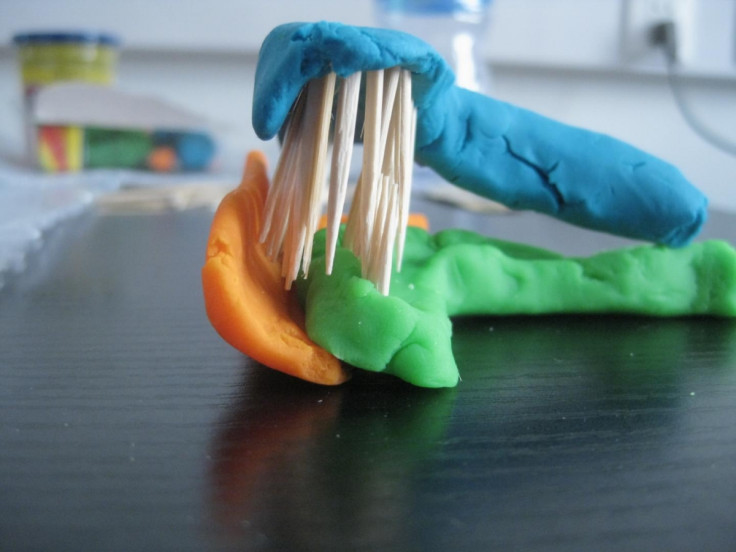Atopodentatus unicus: Hammerhead sea monster was world's first vegetarian reptile

A weird hammerhead sea monster that lived 242 million years ago is believed to be the world's first vegetarian reptile. The creature had a bizarre jaw that allowed it to feed on plants on the ocean floor, analysis of its fossil has revealed.
Atopodentatus unicus was first discovered in 2014 and largely left scientists baffled. "It's a very strange animal," says Olivier Rieppel, from the Field Museum in Chicago. "It's got a hammerhead, which is unique, it's the first time we've seen a reptile like this."
Its name is Latin for "unique strangely toothed". Due to its poorly preserved skull, researchers thought it had a flamingo-like beak. However, two new fossil specimens found in China allowed them to better reconstruct the reptile's unusual jaw.
Their research, published in Science Advances, shows that instead of having a downturned snout, Atopodentatus had a horizontally elongated hammerhead skull. Its jaw was lined with peg-like teeth with more needle-like teeth further into its mouth.

To work out how it would have fed, the scientists rebuilt the jaw using children's clay and toothpicks. "We looked at how the upper and lower jaw locked together, and that's how we proceeded and described it," Rieppel said.
The findings indicate Atopodentatus used its teeth to scrape algae from the shallow ocean floor. After this, it used its needle teeth to filter the plant matter through. "It used the peg-like front teeth to scrape plants off of rocks on the sea floor, and then it opened its mouth and sucked in the bits of plant material. Then, it used its needle-like teeth as a sieve, trapping the plants and let the water back out, like how whales filter-feed with their baleen," Rieppel said.
The findings contradict previous beliefs about the creature, which indicated it used its snout to stir up invertebrates and eat them. As a result, Atopodentatus is believed to be the earliest example of a marine reptile evolving as a plant-eater.

Rieppel said: "The jaw structure is clearly that of an herbivore. It has similarities to other marine animals that ate plants with a filter-feeding system, but Atopodentatus is older than them by about eight million years."
The findings, researchers say, provide another insight into the feeding styles that emerged after the Great Dying mass extinction event. This event say 96% of marine species and 70% of terrestrial vertebrates being wiped out.
"Animals living the years surrounding the Permian-Triassic extinction help us see how life on earth reacted to that event," Rieppel said. "The existence of specialised animals like Atopodentatus shows us that life recovered and diversified more quickly than previously though. And it's definitely a reptile that no one would have thought to exist - look at it, it's crazy."
© Copyright IBTimes 2024. All rights reserved.






